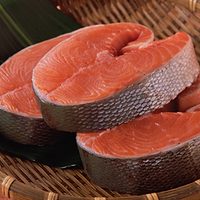See What’s Below the Surface with Guided Microwave Spectrometry

Guided microwave spectrometry (GMS) has been a trusted method for constituent measurement for years. The technology is relatively simple: GMS uses low levels of microwave energy, less than 0.05 W, to precisely measure the dielectric properties of a product as the wave passes through that product. Since the microwaves pass through the entire product, GMS provides an intrinsic measurement of the whole product—not just the surface. Additionally, because the waves can be calibrated to measure more than one dielectric property, you can obtain a variety of repeatable measurements for feedback and control.
Designed for use in a process stream, the Thermo Scientific e scan is an in-process analyzer that uses GMS technology to measure key variable constituents, such as moisture, fat, salt, protein, brix and more, in a variety of foodstuffs. This method provides precise, real-time measurements that let you know immediately whether your key ingredients are meeting your target set points. The advantage of this analyzer is that you will know when you need to adjust your ingredients to meet target set points—giving you better control and a better outcome. This saves you money by limiting the amount of “giveaway” of more expensive ingredients.
The GMS can also reduce waste and energy consumption. For example, when you have precise, instant information about a product’s moisture content, you may be able to reduce the amount of time the product spends in an oven to remove some of that moisture, thereby reducing the energy used to over-dry it.
GMS Uses in Food Safety
Another advantage of e scan analyzer technology is how it can be applied to food safety measures. Many people think constituent measurement is related only to product quality; however, quality goes hand-in-hand with food safety. The e scan analyzer uses guided microwaves to measure key constituent set points, such as moisture levels, acidity, salt concentration and water. As described below, these constituents can play a definitive role in determining shelf life, product stability and overall product safety.
Controlling Water Activity Levels
As one of the critical factors of food quality, water activity levels are measured regularly in most major food production facilities. Moisture content is related to water activity in a non-linear, substance and temperature-specific relationship known as a ‘moisture sorption isotherm curve.’ Depending on temperatures and conditions, the isotherms can predict product stability over time. Controlled water activity levels—whether through the addition of salt, sugar, freezing or drying—help create stable, safe food products by controlling microbial growth and increasing the shelf life of food. Process measurement and control is critical to keeping the water activity low enough to prevent bacterial growth. The e scan analyzer provides a reliable measurement of water activity so producers can ensure minimal bacterial growth long after the product has left their facility.
Concern about Salt Content
Health-conscious consumers are paying more attention to the effects that their salt intake has on their health. Growing concerns about the amount of salt in processed foods is driving consumers to demand lower sodium options from food manufacturers. The National Salt Reduction Initiative in the United States has called for food manufacturers to reduce salt content in products, which may put manufacturers in a difficult situation. Salt plays a prominent role in providing flavor and helping to ensure food preservation. While consumers want manufacturers to reduce salt, they are concerned about synthetic preservatives and artificial flavorings. Measuring salt in food products continues to be important to manufacturers— and the e scan analyzer can provide a solution for accurate measurement and control of sodium in food.
The e scan In-line Analyzer…A Reliable Process Solution
The Thermo Scientific e scan analyzer uses GMS technology to provide real-time, accurate results that are truly representative of the bulk of the product—down to a fraction of a percent. You will have the data you need as your product moves through the process—so you know immediately if your content deviates from set points and your process needs an adjustment.
The e scan analyzer allows for clean-in-place (CIP) but is also easy to disassemble and reassemble if required for a specific application. With no moving parts, the analyzer offers reliable, continuous operation in your product line. Also, because the system relies on microwaves for measurement, there is no obstruction of the product flow. Its rugged design ensures that the e scan analyzer is robust and capable of handling the high-pressure environments that are typical for piped products.
Early controls at every step of the process can help prevent recalls and keep food at its highest quality levels. Incorporating the e scan analyzer to measure ingredient levels can ensure that your product consistently meets the proper target control set points—for safety, quality and taste.
www.thermoscientific.com/escan
Looking for a reprint of this article?
From high-res PDFs to custom plaques, order your copy today!








